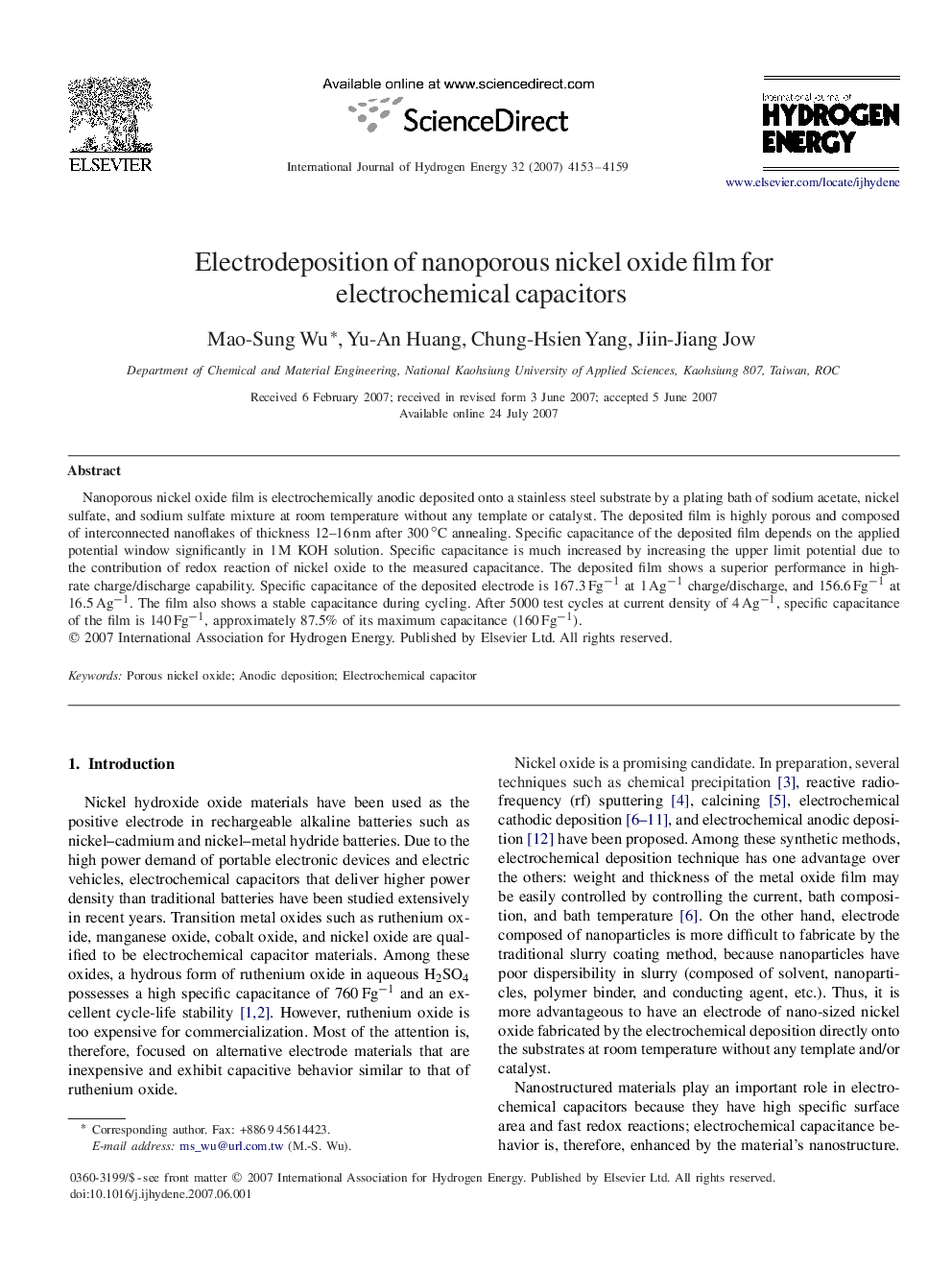| Article ID | Journal | Published Year | Pages | File Type |
|---|---|---|---|---|
| 1281790 | International Journal of Hydrogen Energy | 2007 | 7 Pages |
Nanoporous nickel oxide film is electrochemically anodic deposited onto a stainless steel substrate by a plating bath of sodium acetate, nickel sulfate, and sodium sulfate mixture at room temperature without any template or catalyst. The deposited film is highly porous and composed of interconnected nanoflakes of thickness 12–16 nm after 300∘C annealing. Specific capacitance of the deposited film depends on the applied potential window significantly in 1 M KOH solution. Specific capacitance is much increased by increasing the upper limit potential due to the contribution of redox reaction of nickel oxide to the measured capacitance. The deposited film shows a superior performance in high-rate charge/discharge capability. Specific capacitance of the deposited electrode is 167.3Fg-1 at 1Ag-1 charge/discharge, and 156.6Fg-1 at 16.5Ag-1. The film also shows a stable capacitance during cycling. After 5000 test cycles at current density of 4Ag-1, specific capacitance of the film is 140Fg-1, approximately 87.5% of its maximum capacitance (160Fg-1).
